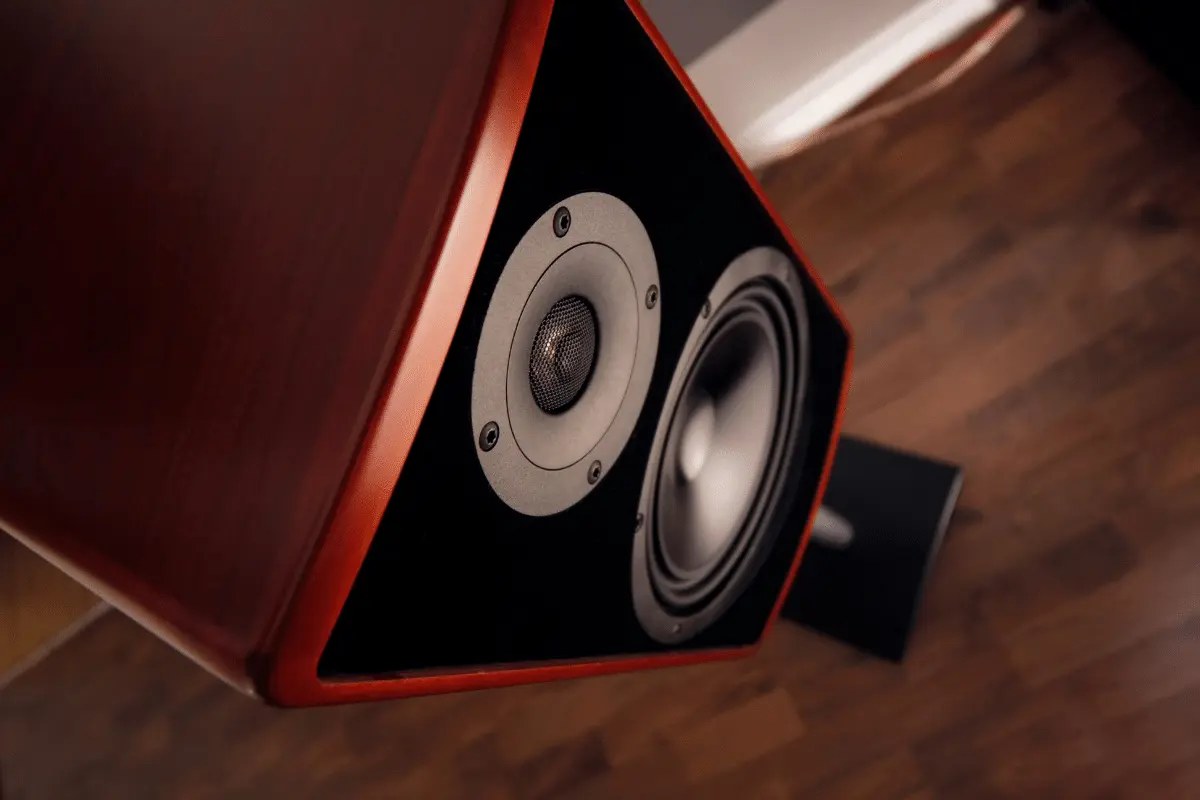Bone conduction headphones have gained significant popularity in recent years, revolutionizing the way we experience audio. Unlike traditional headphones that rely on speakers placed over or inside our ears, bone conduction technology works by transmitting sound through vibrations directly to our skull bones.
These vibrations are then perceived as sound by our inner ear, bypassing the need for eardrums. The concept may sound futuristic, but it has been around for several decades and is now finding renewed interest among tech-savvy consumers.
Brief Explanation of Bone Conduction Technology
The fundamental principle behind bone conduction technology is based on the fact that sound can travel through different mediums, including solids like bone. When we wear bone conduction headphones, small transducers or speakers placed next to our cheekbones generate vibrations that travel through the bones in our skull.
These vibrations stimulate the cochlea, a spiral-shaped organ in our inner ear responsible for converting these vibrations into electrical signals that our brain can interpret as sound. By using this innovative approach, bone conduction headphones allow us to listen to audio without blocking or covering our ears.
Overview of the Popularity and Benefits of Bone Conduction Headphones
Why have bone conduction headphones gained such popularity? There are several reasons why people are opting for this unique audio experience. Firstly, they offer an open-ear design that allows users to remain aware of their surroundings while enjoying their favorite music or podcasts.
This feature makes them particularly attractive to athletes and outdoor enthusiasts who prioritize safety during their workouts or outdoor adventures. Additionally, individuals with certain hearing impairments find bone conduction technology beneficial since it bypasses any potential issues with eardrums or hearing aids by directly stimulating the cochlea.
Moreover, those who dislike the feeling of traditional earbuds or headphones in their ears find bone conduction headphones to be a comfortable alternative that eliminates any discomfort or pressure on the eardrums. Furthermore, bone conduction headphones are an excellent option for individuals with conductive hearing loss, as they can transmit sound directly to the inner ear without relying on the middle or outer ear structures.
This makes them an inclusive and accessible choice for those who may not benefit from traditional audio devices. With these unique benefits and growing interest in innovative audio solutions, it’s no wonder that bone conduction headphones have become increasingly popular among consumers seeking a different way to enjoy their audio content.
Understanding Bone Conduction Headphones
How bone conduction works: vibrations and sound transmission
Bone conduction technology is fascinating because it bypasses the eardrums and directly stimulates the cochlea, allowing sound to be perceived through vibrations in the bones of the skull. When you wear bone conduction headphones, small transducers placed on your cheekbones or just in front of your ears create vibrations.
These vibrations then travel through your facial bones, reaching your cochlea where they are converted into auditory signals that your brain interprets as sound. It’s a clever way to experience audio without blocking your ear canals, making it a suitable option for individuals with hearing impairments or those who prefer to stay aware of their surroundings while listening to music.
Comparison with traditional headphones: differences in sound delivery
Unlike traditional headphones that deliver sound directly into your ear canals, bone conduction headphones offer a different listening experience. With regular headphones, sound waves travel through the air and hit your eardrums, creating vibrations that are then translated into sounds by delicate mechanisms within the inner ear. In contrast, bone conduction technology bypasses these mechanisms by transmitting vibrations directly to the cochlea via bones.
This difference can affect how we perceive audio quality and volume levels. While conventional headphones provide immersive and isolated audio experiences, bone conduction headphones allow us to enjoy our favorite tunes while still being aware of external sounds like traffic or conversations around us.
Factors Influencing Volume Levels in Bone Conduction Headphones
Design Considerations: Speaker Placement, Transducer Quality, and Size
When it comes to bone conduction headphones, the design plays a significant role in determining volume levels. One crucial aspect is the placement of the speakers or transducers.
In well-designed headphones, the speakers are positioned strategically to ensure maximum contact with the bone structure behind the ears. This proximity allows for efficient sound transmission and a stronger volume output.
Transducer quality also affects volume levels. Higher-end bone conduction headphones often employ higher-quality transducers that can produce clearer and louder sound.
These transducers have better sensitivity to convert electrical signals into vibrations, resulting in improved audio performance. Furthermore, headphone size can impact volume levels as well.
Larger headphones typically house larger speakers or transducers, which can generate more powerful vibrations and subsequently produce louder sound. However, it’s essential to find a balance between size and comfort since excessively large headphones may be unwieldy for extended use.
Personal Factors: Individual Hearing Ability, Bone Density, and Sensitivity
While design considerations play a vital role in volume output of bone conduction headphones, personal factors also come into play. Individual hearing ability is one such factor that influences perceived loudness.
People with different hearing capabilities will naturally perceive sound at different volumes even when using the same pair of headphones. Additionally, variations in bone density can affect how well bone conduction technology works for each individual.
Higher bone density allows for better transmission of vibrations through the skull bones and thus leads to increased volume levels. Conversely, those with lower bone density may experience slightly lower volumes due to reduced efficiency in transmitting vibrations.
Sensitivity is another personal factor that can influence perceived loudness. Individuals with heightened sensitivity may perceive lower volumes as comparatively louder while those less sensitive might require higher volumes for optimal listening experiences.
Understanding these design considerations and personal factors helps provide insights into the potential reasons behind varying volume levels experienced by users of bone conduction headphones. By considering both technological aspects and individual differences, users can make informed decisions about their headphone choices and optimize their listening experience.
Common Complaints about Low Volume Levels
User expectations vs reality: understanding the limitations of bone conduction technology
When it comes to bone conduction headphones, one of the most common complaints is that they aren’t loud enough. However, it’s important to understand that this issue stems from a misunderstanding of how bone conduction technology actually works.
Unlike traditional headphones that deliver sound directly into your ear canals, bone conduction headphones transmit sound through vibrations that travel through your cheekbones and reach your inner ear. These vibrations stimulate your cochlea, allowing you to perceive sound.
The result is a unique listening experience where you can still hear ambient sounds around you while enjoying your audio. So, if you’re expecting bone conduction headphones to provide the same level of volume as traditional headphones, you may be disappointed.
Environmental factors affecting volume perception: noise pollution and ambient sounds
Another factor that can contribute to the perception of low volume levels in bone conduction headphones is environmental noise pollution and ambient sounds. Since these headphones don’t block or seal off your ears like traditional ones do, external noises can interfere with the perceived loudness of the audio.
If you’re wearing bone conduction headphones in a noisy environment such as a bustling city street or a crowded subway station, it’s natural for the surrounding sounds to compete with what you’re listening to. Even though bone conduction technology allows for situational awareness and safety, it also means that external noise can diminish the apparent volume of your music or podcast.
Overall, it’s crucial to manage our expectations when using bone conduction headphones and understand their inherent limitations regarding sound volume levels. Additionally, being mindful of our surroundings and choosing suitable environments for wearing these innovative devices will help us maximize our listening experience and appreciate their unique benefits without getting frustrated by perceived low volume output.
Tips to Enhance Volume in Bone Conduction Headphones
Optimal positioning on the face/head for improved sound transmission
Finding the perfect spot for your bone conduction headphones on your face and head is crucial for maximizing volume. Since bone conduction relies on vibrations traveling through your bones, it’s important to ensure a snug fit. Start by placing the transducers just in front of your ears, ensuring that they make direct contact with the cheekbones or temporal bones.
The closer they are to these areas, the better the transmission of sound waves. Experiment with slight adjustments until you find the sweet spot where you can feel the vibrations clearly.
Adjusting headband tension or strap position for better contact with bones
The headband tension plays a significant role in determining how well your bone conduction headphones transmit sound. If the headband is too loose, it may not provide enough pressure to establish optimal contact between the transducers and your bones.
Conversely, if it’s too tight, you may experience discomfort and even headaches. Adjusting the tension allows you to find a balance that ensures sufficient contact without causing discomfort.
Experimenting with different wearing styles (over-ear, wraparound)
One advantage of bone conduction headphones is their versatility when it comes to wearing styles. You can choose between over-ear models that rest comfortably on top of your ears or wraparound designs that effectively encase your head while leaving your ears free.
Depending on personal preference and comfort, trying out different wearing styles can yield varying results in terms of volume enhancement. Some individuals find that over-ear models deliver stronger sound due to better placement on their cheekbones, while others prefer wraparound options as they provide more stability during physical activities.
Customizing equalizer settings or using audio apps to boost volume output
Many bone conduction headphones come with built-in equalizer settings that allow you to fine-tune the audio output. By customizing these settings, you can emphasize certain frequencies and boost overall volume. Additionally, using audio apps or software designed for equalizer adjustments can further enhance your listening experience.
However, it’s important to note that while increasing volume might be tempting, this can sometimes lead to distortion or a decrease in sound quality. It’s essential to strike a balance between amplifying the volume and maintaining the integrity of the audio.
Understanding the impact on overall sound quality
When making adjustments to amplify the volume in bone conduction headphones, it’s crucial to consider their potential impact on sound quality. While increasing the volume might make your listening experience louder, it could also result in distortion or affect clarity. Finding the right balance is key—aim for increased volume without sacrificing too much in terms of overall audio fidelity.
Recommended equalizer settings for different genres of music
To maximize your enjoyment of various music genres through bone conduction headphones, understanding which equalizer settings work best for specific styles can be helpful. For example:
– For bass-heavy music like hip-hop or EDM, slightly boosting low-frequency ranges can create a more impactful listening experience. – Classical music enthusiasts might benefit from emphasizing mid-range frequencies to bring out delicate nuances and orchestral detail.
– Rock and pop genres often benefit from a balanced approach with slight boosts in both bass and treble frequencies. Experimenting with these recommendations while keeping personal preferences in mind will help tailor your listening experience according to genre-specific nuances.
Advanced Techniques to Maximize Volume Output
Using a dedicated headphone amplifier or DAC (Digital-to-Analog Converter)
One effective way to significantly boost the volume of bone conduction headphones is by incorporating a dedicated headphone amplifier or DAC. These external devices work by amplifying the audio signal before it reaches the headphones, resulting in a more powerful output. The benefits of using an amplifier or DAC include increased volume levels, improved clarity, and enhanced dynamics.
However, it’s important to consider compatibility with different headphone models as some amplifiers may not be suitable for all devices. It is advisable to research and select an amplifier or DAC that is compatible with your specific bone conduction headphones for optimal performance.
Exploring firmware updates or software enhancements from manufacturers
Another avenue worth exploring when aiming to maximize volume output is checking for firmware updates and software enhancements provided by manufacturers. Often, these updates are designed to optimize audio performance and address any limitations related to volume levels. Firmware updates can improve sound processing algorithms, increase power efficiency, and fine-tune equalization settings.
Additionally, some manufacturers offer proprietary software that allows users to customize various audio parameters including volume boosting options. Taking advantage of such updates and software enhancements can greatly enhance the overall listening experience with bone conduction headphones.
Conclusion
While bone conduction technology has revolutionized the way we experience audio, it’s important to remember that its limitations exist in terms of maximum volume output. Understanding these limitations and managing expectations accordingly can help users make the most out of their bone conduction headphones. However, for those seeking louder volumes without compromising sound quality, advanced techniques such as using dedicated amplifiers or DACs as well as exploring firmware updates and proprietary software provide viable solutions.
By implementing these techniques appropriately, users can enjoy heightened volume levels while still relishing in the unique benefits offered by bone conduction technology. So, don’t let the volume limitations deter you; with the right techniques, bone conduction headphones can elevate your listening experience to new heights.






Leave a Reply
You must be logged in to post a comment.